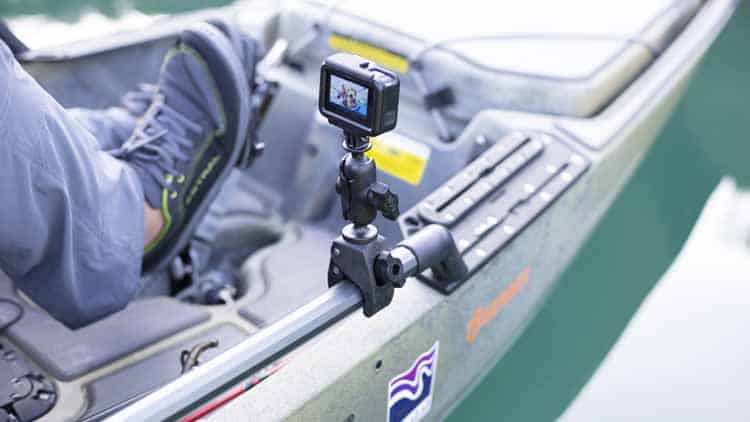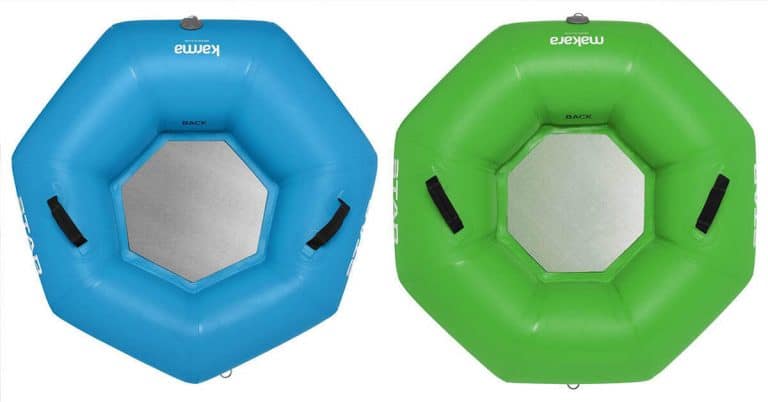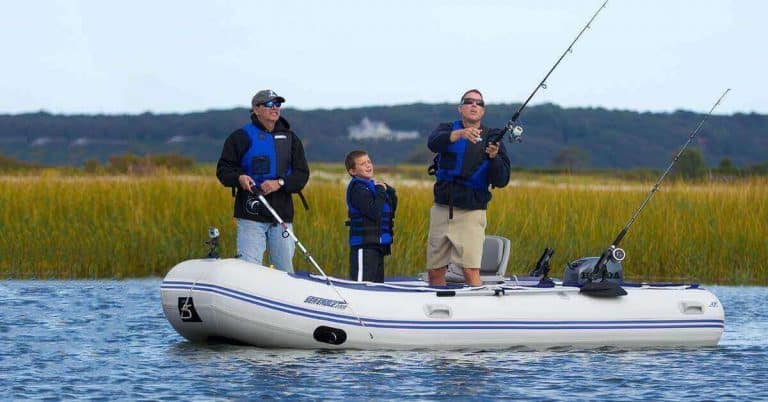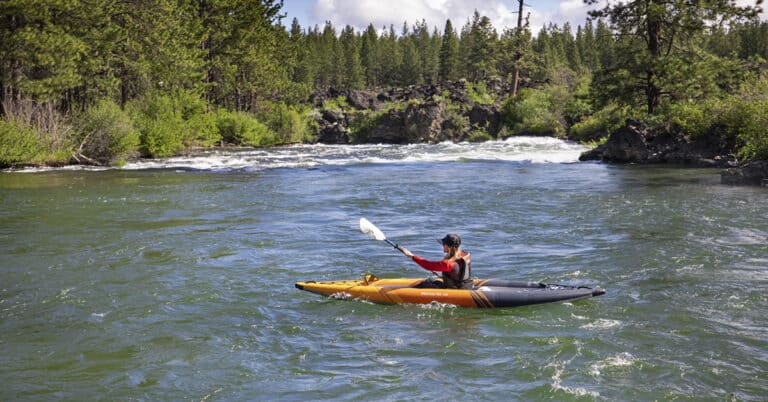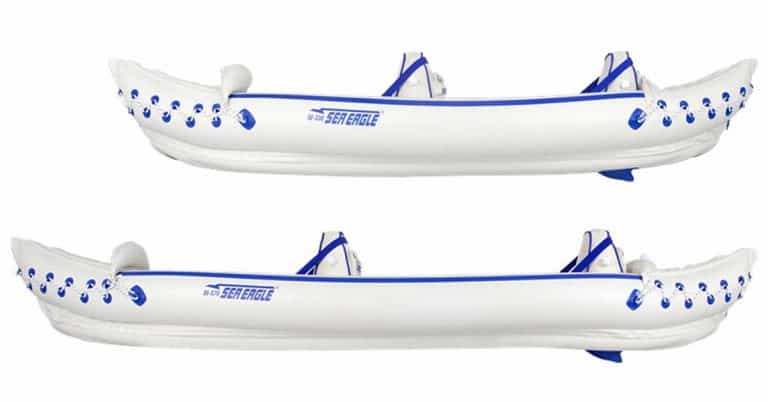Disclosure: I am compensated for purchases made through some links on this site. Click for details.
When kayaking, stability can be as important as mobility, especially for anglers and photographers who require steadiness in diverse water conditions. Kayak anchor systems are designed to provide this stability by securing the vessel in a desired position against wind or current. These systems come in various types, such as grapnel anchors, stakeout poles, and trolley systems, each suiting different environments and purposes.
Choosing the correct kayak anchor system is essential based on the water body’s nature – moving or still, shallow or deep. Factors such as the kayak’s size, the bottom conditions, and the ease of deployment and retrieval of the anchor need to be considered. Proper setup of the anchor system ensures not only the kayaker’s convenience but also their safety, enhancing the overall experience on the water.
Maintenance of the kayak anchor system contributes to its durability and reliability. Routine checks and cleaning can prevent malfunctions and rust, preserving its functionality. Meanwhile, following safety precautions and best practices is crucial for preventing accidents and ensuring a beneficial kayaking adventure.
Key Takeaways
- Kayak anchor systems are critical for maintaining stability in various water conditions.
- Selecting and setting up the right anchor system enhances safety and user experience.
- Regular maintenance and adherence to safety best practices ensure the longevity and reliability of the anchoring system.
Understanding Kayak Anchor Systems
Selecting an appropriate kayak anchor system is crucial for stability and safety on the water. A well-matched system allows kayakers to stay in the desired position despite varying conditions such as currents and winds.
Types of Kayak Anchors
Kayak anchors come in various designs, each suited to different environments. Grapnel anchors and claw anchors are versatile, with multiple prongs that grip rocky and weedy bottoms effectively. For muddy or sandy bottoms, mushroom anchors provide adequate holding power due to their wide-shaped base. In contrast, fluke anchors excel in windy conditions and soft seabeds due to their sharp flukes that dig in deeply. Moreover, for minimal impact, a stakeout pole can be used in shallow waters, while a drag chain may be preferred in areas with heavy plant matter to avoid snagging.
Selecting the Right Anchor for Conditions
The weight of the anchor is a primary consideration; heavier anchors secure kayaks in stronger currents and winds, while lighter ones are sufficient for calm waters. Generally, a ratio of 1 lb for every foot of kayak is recommended. Kayakers must also consider the bottom conditions—grapnel anchors hold well in rocky bottoms, whereas fluke anchors are better for sandy or muddy conditions. Adapting to environmental factors such as currents and winds is essential for a successful anchoring experience.
Anatomy of a Kayak Anchor System
An effective kayak anchor system comprises several components. The anchor line is pivotal—its length should typically be three times the depth of the water to allow for adequate scope. At the end of the line, the anchor connects via a shackle to a chain that serves as a weight to ensure the anchor falls properly and improves the anchor’s angle of pull. Lastly, accessories like buoys and anchor trolleys allow adjustments from the bow to the stern, enabling the kayaker to maintain the desired orientation in the face of shifting winds or currents.
Setting Up a Kayak Anchor System
When setting up a kayak anchor system, it is crucial to select the appropriate equipment and follow a precise installation procedure. Safety and convenience in anchoring depend on a well-configured system that allows for easy set and retrieval of the anchor.
Installing an Anchor Trolley
To install an anchor trolley on a fishing kayak, one must position a pulley system along the stern and bow. This setup includes proper attachment points fixed to the side of the kayak, ensuring that the trolley can glide smoothly from front to back. The YakGear Deluxe Anchor Trolley System features stainless steel hardware and a nylon pulley system, which are essential for durability in marine conditions.
Securing Anchors and Anchor Lines
For securing anchors, a variety of equipment such as a grapnel anchor can be utilized, which is effective for most seabeds. The anchor line, typically made of nylon, should be attached to the anchor and neatly stored in a nylon storage bag when not in use. An anchor line should be at least three to seven times the depth of the water to ensure stability and should be easily retrievable to allow quick relocation.
Advanced Techniques: Drift Chutes and Socks
In windy conditions or strong currents, anglers might opt for advanced techniques using drift chutes or drift socks. These devices slow down the kayak’s drift and provide better control over its position. Specifically designed for use in windy conditions or currents, they complement the anchor system by allowing for more precise positioning without the need for constant anchor repositioning.
Anchor Systems for Fishing Kayaks
Selecting the proper anchor system for a fishing kayak is crucial for stability and safety. The right system will accommodate various water conditions and types of fishing, ensuring efficiency and convenience.
Choosing Anchors for Kayak Fishing
When choosing an anchor for kayak fishing, the environment is a crucial factor. Mushroom anchors are ideal for soft, muddy bottoms where they can create sufficient suction. For rockier areas, kayak anglers might prefer a folding grapnel anchor that can lock onto structures. Size and weight also matter; a lightweight anchor is essential for a fishing kayak to maintain ease of movement and manageability.
Maximizing Efficiency While Anchoring
Efficiency in anchoring comes down to controlling the kayak’s position. An anchor trolley system allows anglers to adjust the anchor point from bow to stern, changing direction with the current or wind. For those who frequent shallow waters, a stakeout pole can quickly secure the kayak with minimal disruption. Powered anchoring systems like the Power-Pole Micro can be a game-changer, enabling instantaneous anchoring with the press of a button.
Convenience Features and Add-Ons
Convenience features can significantly enhance the anchoring experience. A popular add-on, the Anchor Wizard, allows for easy deployment and retrieval with a simple reel system, preventing any untidy lines on deck. Also, anchoring systems with a quick release facilitate immediate disconnection, which is vital for safety in swift currents. Additional accessories like floating markers or anchor line buoys add a layer of functionality and convenience to the anchor system setup.
Maintenance and Storage
Maintaining a kayak anchor system is essential for ensuring its longevity and functionality. Proper storage solutions are equally important to prevent damage and corrosion.
Caring for Your Kayak Anchor System
Regular cleaning is crucial for an anchor system, especially if it is made of stainless steel, which can be prone to corrosion. After each use, one should rinse the anchor with fresh water to remove salt, sand, and other debris. Additionally, inspecting the anchor for any signs of wear or damage should be part of a routine maintenance schedule.
Proper Storage Solutions
When storing an anchor system, it is advisable to dry it thoroughly to prevent rust and corrosion. A nylon storage bag is beneficial for keeping the anchor clean and organized, and it makes the system easy to store. The design of many kayak anchor systems typically prioritizes being compact and easy to handle, which aids in finding suitable storage solutions.
Safety Precautions and Best Practices
When kayaking, maintaining safety is paramount and requires adherence to proven best practices, particularly in anchoring. It is essential to ensure the secure placement of anchors and to react adeptly to environmental shifts.
Anchoring Safely in Various Water Bodies
In shallow waters, kayakers should use anchors suited to the bottom composition, such as a grapnel anchor, to prevent drift due to wind or currents. Best practices include a cautious approach in windy conditions to avert the kayak from capsizing. They should also be mindful of underwater hazards that might not be visible from the surface to maintain safety.
Responding to Quick Changes in the Environment
Kayakers must be prepared to react to sudden changes such as increasing wind speeds or strong currents. Quick adjustments to the anchor line length can help stabilize the kayak. Additionally, they should always have a clear plan to safely detach from the anchor system if conditions dictate an immediate need to move.
Accessory Reviews and Recommendations
Selecting the right anchoring system for a kayak is crucial for stability and safety. This section reviews popular systems and assesses their quality and versatility to help kayakers make informed decisions.
Popular Kayak Anchoring Systems and Tools
The market offers a variety of anchoring systems designed for the needs of kayakers. The YakAttack LeverLoc Anchor Trolley boasts a unique locking mechanism and smooth pulleys, making it a favored choice for its intuitive design and ease of use. Another widely used option is the Extreme Max 3006.6548 BoatTector Folding Grapnel Anchor, which is recognized for its compact size and effectiveness, especially for kayak fishing. For anglers looking for impeccable hold and precise positioning, the Power-Pole Micro Anchor holds a top spot in terms of advanced technology and reliable performance on the water.
Assessing Quality and Versatility
When reviewing kayak anchors, attention to material quality and functional versatility is paramount. The Best Marine Kayak Anchor is renowned for its galvanized iron construction, ensuring durability and resistance to corrosion in diverse aquatic environments. In terms of versatility, the Anchor Wizard offers an innovative hand winch design, allowing for quick deployment and retrieval which is particularly useful in river settings with rocks and wood. Kayak equipment must provide both security and ease of use, and versatile designs like the YakGear Deluxe Anchor Trolley System deliver on this by accommodating various anchoring situations with its customizable setup.
Conclusion
Choosing the right kayak anchor system is crucial for safe and enjoyable water expeditions. They provide stability and control, with manual systems being the most widely used due to simplicity, whereas mechanical systems offer ease of deployment. Anglers and enthusiasts should ensure that their selection caters to their specific needs, considering factors such as water conditions, kayak type, and anchoring environment.
Anchor trolleys are incredibly beneficial, giving users the flexibility to adjust their kayak’s position relative to the wind or current. This feature is highlighted as especially helpful in windy conditions, showcasing the importance of adaptability in anchor systems. For those prioritizing quiet and spot-on stability for pursuits like fishing or bird-watching, selecting an appropriate anchor, such as one from a curated list of top systems, becomes indispensable.
Incorporating this information, one can make an informed decision when investing in a kayak anchor system, thereby enhancing their on-water experience. Individuals are advised to always prepare for varying conditions and to equip their kayaks with a reliable anchoring setup. As every adventurer’s needs are unique, investing time in understanding the nuances of different anchor types and systems is not just recommended, but essential for maximizing their time on the water.

